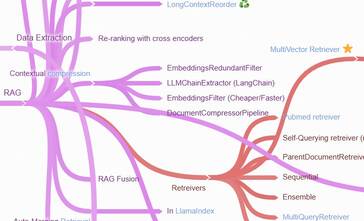Pragmatic Research That Builds and Travels
I have noticed a steady shift from abstract theorizing toward pragmatic research, resulting in tangible, reusable artifacts across many areas. These artifacts are not just code; they are models, methods, algorithms, datasets, and tools that solve real operational problems. In areas where generative AI is already changing workflows, the value of such pragmatic research is becoming unmistakable.

Image credit: Justmee3001, CC BY-SA 4.0 https://creativecommons.org/licenses/by-sa/4.0, via Wikimedia Commons
Why building matters now
The catalyst is twofold. First, the technical maturity of generative AI and related toolchains has lowered the cost of moving from idea to prototype. Second, health systems and organizations are asking for systems that integrate with workflows and regulatory constraints rather than for more conceptual frameworks. In practice, this means moving upstream in the research lifecycle: designing artifacts with deployability, explainability, and governance in mind, and creating reproducible stacks that others can use.
Open-source availability plays a special role. When models, algorithms, and tools are shared openly, they invite scrutiny, rapid iteration, and safer deployment, especially in high-stakes domains like healthcare, where transparency aids validation and trust. Open artifacts accelerate safe, community-driven improvements and reduce single-vendor lock-in, improving the odds that a research output will see real-world use.
How evaluation and impact change
Traditional academic success metrics emphasize conceptual novelty and citation counts. For pragmatic research, those metrics are necessary but insufficient. The new signals of value include artifact availability, adoption, downloads, forks, integration reports, and even social engagement that indicates uptake and practitioner interest. Empirical evaluation will increasingly combine:
- Classical metrics from peer review and controlled experiments.
- Community signals (downloads, GitHub stars/forks, package installs).
- Operational outcomes (reduced task time, fewer errors, improved throughput).
- Policy and governance readiness (documentation, auditing hooks, monitoring plans)
As researchers build usable systems, journals and conferences will need to evolve their review criteria to assess reproducibility and real-world applications, not just the strength of theoretical claims.
Sharing, incentives, and scholarly credit
Open-source distribution is central to the pragmatic approach because it enables external validation and iterative refinement. But scholarships must also evolve to reward the labor of engineering, documentation, and maintenance. Practical contributions, well-documented software and model releases, replicable deployment recipes, and usable toolkits should become first-class scholarly outputs. Peer communities should value artifacts that show measurable use in the wild, not just theoretical elegance.
Risks and guardrails
A pragmatic focus raises important risks: rushed or poorly validated tools entering clinical environments, fragile artifacts that break in new settings, and overreliance on usage metrics that can be gamed. Academic conferences and funders must insist on transparency: open validation datasets (where privacy allows), clear documentation of model limitations, and post-deployment evaluation plans.
What this means for MIS and health informatics researchers
For MIS researchers, the pragmatic paradigm reframes scholarship as product plus evidence. Studies should connect organizational processes, human factors, and deployed systems, measuring how an artifact changes decisions, coordination, or resource allocation. For health informatics scholars, the emphasis on safety, explainability, and auditability becomes non-negotiable; artifacts must be designed with clinical oversight, privacy-preserving techniques, and regulatory constraints in mind.
Practically, scholars will benefit from adopting engineering best practices: continuous integration for models, packaged reproducible environments, clear APIs, and user-centered design. Collaboration across disciplinary boundaries, clinical partners, product engineers, ethicists, and implementation scientists will be essential to translate artifacts into impact.
Research that travels
The pragmatic paradigm restores a simple promise: research should travel beyond the page. When MIS and health informatics scholars build artifacts designed for real settings and share them openly, scholarship becomes a living conversation, one of iterative improvements, operational learning, and measurable benefits. Publication will no longer be the last step in the journey; it will be a milestone on the route to adoption, where downloads, forks, deployment stories, and measurable outcomes tell the fuller story of impact. In an era powered by generative AI, the most consequential research will be the kind that people can pick up, run, and improve. Research that travels beyond the lab or paper into real-world settings.




